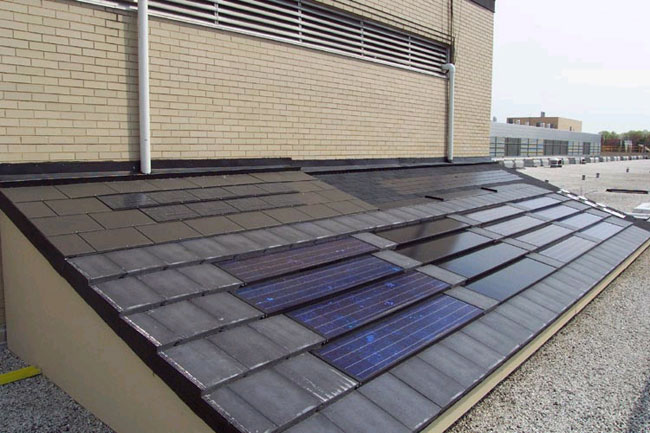Solar Shingles Could Power Tomorrow's Homes

Tired of your roof just soaking up rays and not pulling its load? You’re not alone. Increasing numbers of people are putting their roofs to work generating electricity. And that does not necessarily mean installing unsightly steel-and-glass solar energy modules.
Today you can get photovoltaic shingles (or tile, or slate) that will do the job and still look like a roof.
For instance, the National Institute of Standards and Technology has been testing various forms of photovoltaic roofing products for the past year on roofs in Maryland to calibrate their output. Brian Dougherty, project manager, said the test includes tile (popular in the Southwest), slate (popular in Europe) and shingle (popular everywhere). All of them have inactive areas where the roofer can drive nails and not short out any circuits.
The result of the NIST test, expected later this year, will be a technical report on the underlying technologies rather than a buyer’s guide to brand names, Dougherty said. But he said that efficiency ranges from 6 percent of the incoming solar power being converted to electricity, to about 16 percent.
“Shingles are just getting started—most of the market is still roof-mounted modules,” cautioned Paul Maycock, president of Photovoltaic Energy Systems Inc. in Williamsburg, VA.
And he was not sure that the situation would ever change dramatically, since most existing roofs were not designed with solar energy in mind.
Working roofs
Sign up for the Live Science daily newsletter now
Get the world’s most fascinating discoveries delivered straight to your inbox.
“You look for a south-facing roof that is not shadowed by trees or by another building, and you cover it as best you can,” Maycock said. Solar energy modules can be mount on racks on the roof to catch the sun to best advantage, although the results may be quite unsightly.
“With shingles, you are stuck with the roof you have, and with the less-desirable results that it gives you. So in many cases you just don’t do it,” Maycock said.
So it’s no surprise that most of the photovoltaic (PV) roofs are in new upscale residential construction in the sunny Southwest, where the cost of a PV roof (about $14,000 for 2 kilowatts of capacity, according to Maycock’s figures) would fit in the mortgage’s round-off error.
Taxes and power
Additionally, California and New Jersey offer tax credits that actually make solar power economically sensible, Maycock added. (Other states offer less juicy tax credits, and the Federal taxman offers one that caps out at $2,000.)
Maycock figures that the cost of electricity from a PV roof is about 40 cents per kilowatt hour, but that tax credits can reduce that figure to 20 cents. The national average for utility power is 12 cents, but the price ranges between 16 and 21 cents in California, and as high as 24 cents in parts of New York State, he said.
To make PV roofing pay, the local utility must also offer “net metering” meaning that your power meter can run backward while your roof is sending excess power to the grid, reducing your bill. (Even with a south-facing PV roof, 70 to 80 percent of an average home’s power will still have to come from the utility company.) Net metering is available in about 20 states, Maycock noted.
- Video: How to Make a Lemon Battery
- Top 10 Emerging Environmental Technologies
- 10 Ways to Green Your Home
Ancient 'military outpost' in North Macedonia might be birthplace of Alexander the Great's grandmother
NASA rover discovers out-of-place 'Skull' on Mars, and scientists are baffled
A long-lost ice sheet could predict the future of New York City — one in which Lower Manhattan and Coney Island are 'perpetually submerged'









